Characteristics Of a Creative Person: Creativity is the process of creating something new and worthwhile. It might be ethereal (as a concept, a scientific hypothesis, a musical composition, or a joke) or substantial (like a physical object) (such as an invention, a printed literary work, or a painting). Simply put, creativity is the process of bringing your ideas, fantasies, and dreams to life. An innovator or a producer of new ideas is another term for a creative individual. Someone who offers new ideas, techniques, or concepts. You can detect hidden patterns, draw connections between things that aren’t generally connected, and come up with fresh ideas while you’re being creative.
Creative talent is based on innovative thinking, which is a combination of hard effort and creative problem-solving. Creativity, according to neuroscientists, is not limited to a particular brain area or even a single side of the brain, as the “right-brain” myth indicates; rather, it involves the entire brain. This complicated process involves numerous interconnected cognitive processes (both conscious and unconscious) and emotions, with distinct brain areas assigned to each task and working as a team to complete the assignment.
However, the brain’s “executive attention” network is also essential for creativity. Executive control procedures help us plan future activities, remember to utilize numerous inventive methods, keep track of the strategies we’ve already attempted, and reject the most obvious options.
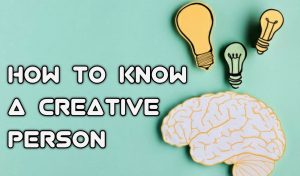
Recommended: How to know an intelligent person: 12 Signs
Some Of the Habits of Mind to Foster More Creativity
a. Imaginative play: Children’s imaginative play exposes a reservoir of naturally-born creativity. Children engage in pretend play by adopting numerous perspectives and manipulating emotions and ideas in a fun manner. Adults may transform the way they work by nurturing a youthful sense of play.
According to research, combining work and play may give the best environment for learning and creativity in both children and adults, and that play and intrinsic joy are inextricably linked, resulting in a synergy that naturally leads to increased inspiration, effort, and creative growth.
b. Passion: An event or a connection that has influenced us in some way and has the ability to inspire us usually ignites our passion. Emotional fuel is typically what kickstarts a creative journey, but it’s simply the beginning. In the long term, those who succeed in realizing their creative aspirations balance their enthusiasm for the future with realistic techniques for accomplishing their goals; inspiration with hard work; and dreaming with action.
If someone encourages you to “follow your passion,” be wary: it’s not really effective advice aside from being one of the most overused clichés. You should select a hobby that complements your other interests and is in line with your true personality. Your urge to prove yourself to others is unlikely to result in innovation since it relies on you avoiding barriers that would otherwise lead to advancement.
Also see: 7 Qualities of a good teacher
c. Daydreaming: Daydreaming is everything from a waste of time for creative individuals, despite what their parents and instructors may have told them. According to a study of the most recent research on daydreaming, it can help with creative incubation, self-awareness, future planning, a meditation on the significance of one’s experiences, and even compassion.
Though it may appear to be useless, mind wandering can really boost creative thinking. Try taking a five-minute daydreaming break every hour the next time you’re working on a creative project or professional assignment that demands tremendous attention and creative abilities. Try strolling, doodling, or cleaning as a basic activity to see how it influences your thoughts and thinking.
d. Intuition: Intuition comes from our unconscious, or spontaneous, information-processing systems, and it affects how we think, reason, create and interact with others. Over the last three decades, cognitive scientists have made significant progress in understanding the unconscious mind’s capacity, resulting in the acceptance of a dual-process theory of human cognition, sometimes known as the “quick and slow brain” idea. The quick brain system includes intuition.
The structure of the rapid brain differs from that of the slow brain. It supports us in the assimilation of new information into current knowledge systems, as well as complicated pattern identification and unexpected connections that lead to more unique thoughts and solutions. When it comes to creating creative ideas, the fast brain has the most influence, while the slower brain has the most influence when it comes to researching and experimenting with those ideas to see what they may be used for.
Also see: How to know a person with low intelligence
e. Mindfulness: While the ability to focus on the present moment without being distracted or judging it is fundamental for anybody seeking joy and fulfillment in life, it is especially critical for creative thinkers. Mindfulness has been linked to many cognitive and psychological benefits, including improved task concentration and sustained attention, empathy and compassion, introspection, self-regulation, enhanced memory and learning, and positive affect and emotional wellbeing, according to a large body of research.
Many of these are necessary for creative thinking. However, achieving a mix of mindfulness and mind-wandering is ideal for cognitive flexibility and creativity. Some types of mindfulness, particularly those that teach people to let go of their thoughts rather than welcome them more openly, may actually work against creativity. Open-monitoring meditation, it turns out, increases both the activation and functional connectivity of the imagination network.
Recommended: Characteristics/Features of a democratic government
Characteristics of a Creative Person
A creative mind encourages us to attempt new things and participate in activities that will help us reach our greatest potential. Is creativity a talent that can be trained like a muscle, or is it something that certain people are born with? Individuals that have creative thinking qualities are more likely to come up with unique solutions to their problems. Here are some qualities that creative people possess and use in their daily lives:
1. Curious: Because creative individuals like learning new things, they may spend their leisure time reading books or watching videos on topics that interest them. It is frequently interesting or fulfilling for them to take on the effort of comprehending topics with which they are unfamiliar. For personal reasons or to improve their performance, creative people may seek out opportunities to master new talents. They bring this sense of wonder to their work by asking questions.
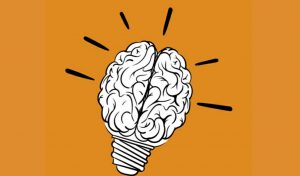
A creative individual could, for example, strive to come up with new product ideas by asking, “Why?” “Why don’t we market a product that accomplishes this?” they could ask. “Why not?” they question if someone tells them they can’t accomplish something. “What if?” might be a good way to start a conversation. These questions are intended to spark conversation and allow for experimenting around a concept.
Also see: Advantages and Disadvantages of learning online
2. Flexibility: The capacity to generate several ideas that are not variants on a single theme. Participants’ flexibility may be strengthened by providing them with a scenario and then gradually adding new conditions until an agreement is obtained. It will keep individuals on the edge of their seats as they are forced to come up with new answers to shifting scenarios. Flexibility also allows creative individuals to alter their views about ideas, allowing them to accept when they are mistaken.
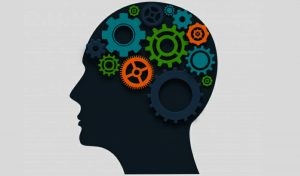
Even if a creative person doesn’t like a colleague’s suggestion for running a work process at first, they are eager to listen to the reasons behind it. When they hear the other person’s point of view, they may realize they didn’t completely get the concept at first and may now confess they were mistaken.
3. Fluency: The ability to come up with new innovative ideas on a regular basis. This is accomplished by holding creative problem-solving workshops in which participants are encouraged to come up with new ways to use everyday products such as toothbrushes, erasers, and pencils. After that, the same method may be used for work-related topics.
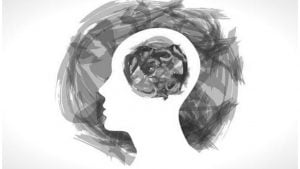
Recommended: How to improve your emotional intelligence
4. Intuitive: Intuitive individuals make decisions based on their feelings, and creative people may be more attuned to this capacity than others. Rather than feeling constrained by more rational constraints, they trust themselves to follow their hearts. Although intuition may not always lead to the best answer, it is a useful tool for brainstorming and idea generation.
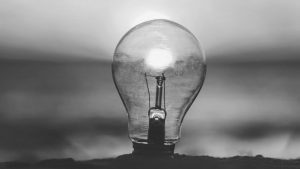
Some people blend intuition and logic in their reasoning. They may, for example, rely purely on intuition to produce new product ideas before putting logic to the test to see if it is feasible. They may come up with new ideas that haven’t been attempted before if they go beyond the facts or what presently exists. They assess whether there is a reason why they cannot bring those ideas to life in the following phase of the creative process.
5. Energetic: Creative individuals are typically energetic—not in the sense that they are hyperactive, but in the sense that they put a lot of energy into their job. They are frequently enthralled by projects and demonstrate their excitement when doing them. When creative individuals devote their whole attention to something, they may work on it for hours until it is completed. They do, however, constantly bring their enthusiasm to work, so it never seems like work.
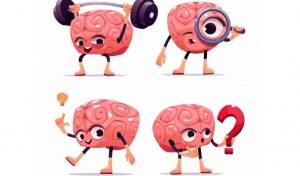
Instead, people may derive pleasure or satisfaction from such encounters. This quality benefits team members since the creative person’s strong enthusiasm typically rub off on their coworkers. When a team is starting the brainstorming process, for example, having someone who opens the session with passion and develops interest around the process helps encourage the other members to join.
Recommended: Signs, Causes, Effects and Solutions to low self-esteem
6. Sensitive: Creative individuals are often sensitive as a result of their open character. This sensitivity can benefit individuals in a variety of situations, both emotionally and professionally. People who are sensitive appear to be more approachable and willing to listen to others’ thoughts or feelings. They frequently have an easier time creating solid and trusted connections when they care about how others feel.
Their sensitivity can also heighten their awareness of concerns in their environment, motivating them to work harder to resolve them. A creative worker working in product development, for example, may take a very sympathetic, customer-centered approach. They want to make sure that the product meets customers’ needs and provides a pleasant experience. Depending on the product, their sensitivity may encourage them to find ways to make it more accessible to all customers.
7. Open-minded: An open-minded individual is eager to listen to fresh ideas and try them out. When working with others, creative individuals want to hear all of the options and investigate them further. They do not pass judgment on others’ opinions or viewpoints because of their open-mindedness. Rather, they take the time to listen to people in order to better comprehend them.
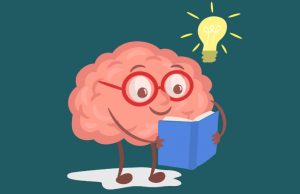
They are also open to new experiences, thus they like experimenting with different methods of accomplishing jobs. Trying new activities might be a fun way to liven up their days. It might be as easy as choosing a different route to work one day to open themselves up to new experiences. If they are given a project, they may choose to work with someone new rather than their typical coworker.
Also see: How to make a long distance relationship work
8. Risk-taking: People that are creative are willing to take on the risks that come with attempting new things. They can’t tell if a notion is good or harmful until it’s tried or studied, thus all ideas have the potential to be useful. Even if one fails, it may be used as a learning experience for the future.
They believe that not taking chances stifles creativity because it forces people to stay in their comfort zones. Creative individuals consider the possibility for reward when deciding whether or not to take a risk. While buyers may dislike a product, it has the potential to become the best-selling item of the year. And if it’s something they feel would benefit or improve people’s lives, they consider it a risk worth taking.
9. Problem-solving Success: Creative problem solving, like any other activity using creativity, encounters severe impediments of two types: individual and organizational. Many businesses establish their future vision while looking back for learning opportunities. They design their strategies based on events and scenarios they have already encountered as a result of this strategy.
This does not necessarily prepare them for tomorrow’s issues because they have already lost their anticipatory abilities. The evolution of creative problem solving is hampered by this stifling of ideas. It is the presence of these barriers that makes the creative problem-solving process difficult to practice without a pre-existing setting.
Recommended: Best time to read and understand effectively
Conclusion
Humans are born creative and are then educated to be uncreative as they mature. Consider this: As a youngster, you’re encouraged to take art lessons and “go for the stars,” but as you get older, you’re taught to get serious, follow the straight and narrow road, and pay your taxes. Non-creative behavior is learned over time, according to research. When we become older, we tend to stop pursuing our creative potential. Because they are perceived to have odd views and lack the know-how for true commercial innovation, creative people don’t always have the most encouraging work environment.

Edeh Samuel Chukwuemeka, ACMC, is a lawyer and a certified mediator/conciliator in Nigeria. He is also a developer with knowledge in various programming languages. Samuel is determined to leverage his skills in technology, SEO, and legal practice to revolutionize the legal profession worldwide by creating web and mobile applications that simplify legal research. Sam is also passionate about educating and providing valuable information to people.